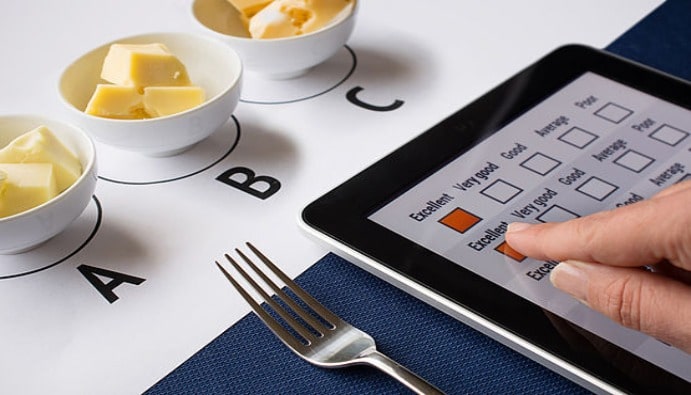
BLOG
KATEGORİDEKİ DİĞER YAZILAR

Sensory assessment is the evaluation of the signals a person receives through the senses of sight, hearing, taste, smell and touch.
During sensory evaluation, sensory attributes are addressed in the following order: appearance → smell/aroma → taste → texture
The appearance of the food product, inside or outside the packaging, is the main feature. Expectations from the appearance are used to make a quick judgment about the quality of the product or its suitability for the consumer. Therefore, shape, size, surface texture and color (surface and cross-section) should be examined in detail when evaluating samples in the laboratory.
Characteristics of shape and size include, but are not limited to, length, width and thickness; geometric shape (e.g. square, round); distribution of fillers or additives. Surface texture should be assessed according to whether it is dry or moist, smooth or rough, matt or glossy, soft or hard, crunchy or chewy.
Odor is defined as a result of a process by which volatile compounds move during sniffing through the nasal passage into the nasal cavity where they are detected by the olfactory system. The surface properties of the food product also play an important role where the diffusion of volatiles from a soft, wet and porous surface is greater than from a hard, dry and smooth surface.
During sensory analysis, several processes occur simultaneously to aid perception. First, the chewing of food. In this process, retronasal olfaction takes place. At the same time, the flavoring compounds in food dissolve in saliva and come into contact with taste receptors packed in taste buds. These tastes are perceived as sweet, sour, bitter, salty or umami. Additional sensations due to the sensitivity of the mucous membranes of the mouth can be caused by certain chemical compounds stimulating the nerve endings (astringency, metallic taste, cooling sensation). The sum of the above-mentioned perceptions is defined as food aroma.
Texture can be defined as a result of the mechanical, structural and surface properties of food products. In other words, it can be thought of as a complex sensory property consisting of several different perceptions at the same time. Basic texture perception is done through the organs of sight and hearing. Terms that can be used to describe the characteristics of food in terms of visual perception are surface properties, homogeneity, oiliness and moistness. The organs of hearing are associated with properties revealed through sounds (e.g. crunching) made when holding or chewing food. The sense of touch and pressure are associated with texture properties that characterize the structure of the food.
Nanolab Laboratories Group continues to offer Sensory Panel Analyses.
Contact us for more information.
You can follow us on LinkedIn for up-to-date news and posts about our services.
Follow our Instagram account to be informed about our latest blog posts.